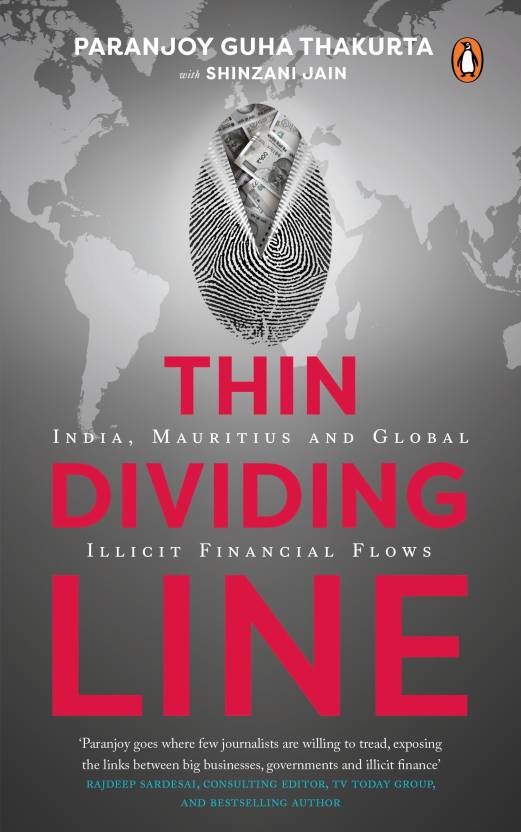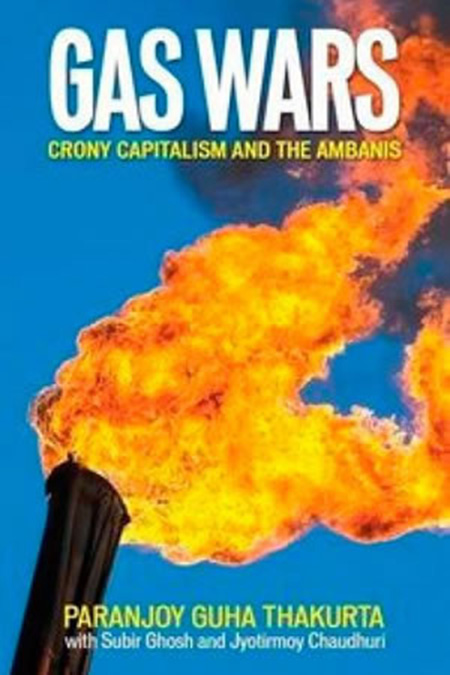There is an ancient parable from the Indian subcontinent about a group of blind men who touch different parts of an elephant, the side of its body, its trunk, its tail, its ears and its tusks, to arrive at a variety of conclusions about what they have touched. The moral of the parable is that many of us human beings tend to claim superior knowledge on what are supposed to be “absolute” truths based on our partial, incomplete and subjective experiences.
Take the case of India’s electricity sector. Everybody and his brother knows that there is much that is wrong about the way power is being generated and distributed in the country. But the discourse on this topic often gets obfuscated by opinions of those who confuse rather than provide clarity.
The Narendra Modi government, with its love for coining acronyms, has claimed that much has been done to provide “electricity for all” but the deep-rooted financial problems of this sector remain unresolved. Two much-acclaimed plans and schemes – the first with two acronyms rolled in one, UDAY or Ujjwal Discom (meaning electricity distribution companies) Assurance Yojana, and SHAKTI or the Scheme to Harness and Allocate Koyla Transparently in India – appear to have achieved little so far.
Uday means sunrise. However, the sun seems to be setting on many stranded assets of power companies. Launched in November 2015, UDAY was supposed to be a financial turnaround and revival package that would provide a “permanent” solution to the problems being faced by discoms. Under the UDAY scheme, state governments were called on to bear 75 per cent of the debt burden of discoms while the discoms themselves would issue bonds for the remaining 25 per cent.
The Union government does not distribute a single unit of electricity. Most discoms are owned and run by state governments; they were earlier described as SEBs or state electricity boards. Of the electricity consumed in the country, barely 10 per cent is distributed by private companies, that too, mainly in urban areas such as Delhi, Mumbai, Kolkata and Ahmedabad.
What has happened is that the burden of losses of these discoms have shifted from one pocket of the state government to another. The Chairman of the 15th Finance Commission Nand Kishore Singh has acknowledged that the issuance of UDAY bonds has placed pressure on the already-strained finances of state governments.
The Union government has set a laudable target of bringing down the average countrywide aggregate technical and commercial losses (ATCs) of the power sector to 15 per cent by end-March 2019. The target seems unlikely to be achieved. The all-India ATC rose from 19 per cent in end-March 2018 to 23 per cent in end-June. States with high ATCs include Uttar Pradesh, Jharkhand and Chhattisgarh (all currently run by the ruling Bharatiya Janata Party).
Until some years ago, ATCs were called T&D losses or “transmission and distribution” losses. A former Union Minister for Power P Rangarajan Kumaramangalam used to describe the phrase as “theft and dacoity” losses.
Shakti means strength. But there are no indications that the coal-power tangle has been untangled. For decades on end, there has been poor coordination among different ministries of the Indian government, especially among the Ministries of Power, Coal and Railways. This problem continues to persist. According to the Ministry of Power, coal-based electricity accounted for 57 per cent of the total installed power generating capacity in the country.
Under SHAKTI, which was started in September 2017, Coal India Limited – the public sector behemoth (to continue with the elephantine analogy) that, together with its subsidiaries, mines around 80 per cent of all the coal consumed in the country – allocated over 27 million tonnes of coal over a period of 25 years to ten privately-owned power plants. Over one-third of this coal was allocated to companies in the Adani group.
SHAKTI envisaged a reverse bidding process but the reduction in tariffs (between one and four paise per unit or kilowatt hour) was not as much as had been anticipated by some. It can be argued that the scheme has resulted in more gains for producers than consumers. CIL remains reluctant to sign long-term coal supply agreements.
The problems of this sector hardly end here.
In February this year, the Reserve Bank of India (RBI) issued a circular giving banks a six-month deadline to identify non-performing assets (NPAs) on their books and initiate resolution proceedings, failing which the banks would be obliged to approach the National Company Law Tribunal (NCLT) and start bankruptcy proceedings against the holders of NPAs.
There are 60-odd major defaulters in the power sector; their combined NPAs are close to 40 per cent of the total NPAs of all banks in India which aggregate over ₹10.2 lakh crore – that is the figure 102 followed by eleven zeros. (India’s gross domestic product or GDP at current prices is around ₹166 lakh crore, according to the Union budget.) In terms of installed power generating capacity, a total of more than 34,000-megawatt capacity is financially stressed.
The Parliamentary Standing Committee on Energy listed 34 stressed coal-based electricity projects with NPAs totalling nearly ₹1.75 lakh crore. Add to this figure, the total NPAs of discoms of around ₹2.32 lakh crore and the grand total works out to ₹4.07 lakh crore or around 40 per cent of the total NPAs of the country’s banking system. (The committee’s report was prepared in March 2018 but presented in Parliament in August.)
The committee stated that the RBI’s guidelines would only deepen the crisis in the power sector. Why? The guidelines have a distinct leitmotif (or recurrent theme) and are not sector-specific. There is need for a specific dispensation for the power sector, the panel of MPs from different political parties argued.
The 34 coal-based stressed projects include ones set up by groups such as Adani,
Essar (Ruias), Jaypee, Lanco, GVK, GMR, Jindal. Half of the 34 plants, that is, 17 of them have problems related to coal linkages.
The RBI’s six-month deadline expired in August 2018. Some of the private power companies sought to unsuccessfully earn a reprieve from the bankruptcy process mandated by the RBI’s circular. The courts did not oblige them.
The Cabinet Secretary is seeking to resolve the issues. But the RBI remains adamant. Representatives of the country’s central bank and apex monetary authority stayed away from two meetings convened in late-August and mid-September.
The RBI had earlier turned down a suggestion made by the Ministry of Power to set up an asset reconstruction company (ARC) to place stressed assets of power companies in a “warehouse” of sorts so that these are not sold at “distress” prices after the NCLT process kicks in. The Ministry wanted the RBI to relax its norm specifying that an upfront payment of 15 per cent of the value of an asset must be made to lenders by the ARC. The RBI framework provided for adherence to strict deadlines for resolution of these NPAs of corporate entities that had unpaid loans of ₹2,000 crore or more. It mandated starting insolvency proceedings in case no resolution plan is provided by the lenders within 180 days of default.
Setting up an ARC is a legal option available to avoid insolvency proceedings for these stressed power assets. Once such proceedings start, the promoter loses control of the assets. Under the guidelines, the NCLT has to appoint an interim resolution professional who would seek a solution for the concerned company in 370 days or the company would have to go through liquidation proceedings.
A new Electricity Act came into being in 2003 but the problems of the power sector have mounted. Since then, the accumulated deficit of this sector has risen from ₹20,000 crore to more than ₹4 lakh crore at present. The share of the private sector in total installed generating capacity in India rose from 13 per cent in 2007 to 44 per cent in 2017.
The recently set up coal-based power plants are expensive assets generating expensive power. Banks were tacitly encouraged to disburse large amounts for power projects as such loans were classified as lending for the “priority” or “core” sector. But electricity consumers can be “squeezed” to pay more for electricity only up to a point given existing political compulsions. This crisis is not a technical one but a financial one. There are huge losses to be borne by the economy as a whole.
One cannot throw away existing power plants exist even if these are operating low capacities or plant load factors (PLF). According to the Power Ministry, the average PLF for coal-based power plants in the country came down from 77.5 per cent in 2009-10 to 60.59 per cent in the current financial year (till end-August). The fall in the PLF for the private sector in this period was sharper: from 83.59 per cent to 55.20 per cent.
Meanwhile, a draft report prepared by a high-powered committee appointed by the government of Gujarat has come up with a tentative plan to rescue stranded power projects in the state run by the Adani, Essar and Tata groups. These are three among the biggest power projects in the country. The committee was set up by the Gujarat government in July 2018.
The three power plants, all of which use coal imported from Indonesia as fuel, have drastically reduced generation after the prices of Indonesian coal went up. The companies tried but failed to obtain a revision of tariffs. The Supreme Court ruled against such a move in a judgment in April 2017. The sharp fall in electricity generation significantly is causing a power crisis in Gujarat and in other states where these plants are supplying power, namely, Maharashtra, Rajasthan, Haryana and Punjab.
According to a draft version of the committee’s report, a package of measures has been proposed wherein “the burden of hardships will have to be borne by all the stakeholders” – that is, the developers, the lending banks, and consumers. The burden borne by the developers will include all losses incurred by them so far, which will not be compensated to them.
The lending banks will be expected to reduce their debt burden on the projects to the tune of more than ₹9,000 crore. This would be despite the fact that one of the three projects (set up by the Essar group) is already considered an NPA, while the two others are considered “stressed” assets.
The draft report expects that this will be possible only after amending the power purchase agreements (PPAs) governing the sale of electricity from these power plants to state government discoms in the five states mentioned to permit changes in tariffs. The committee holds that the Supreme Court was merely interpreting the terms of the existing PPAs and that its judgement does not prevent the parties to the contracts – the discoms and the power generators – from mutually amending the PPAs.
However, this suggestion flies in the face of a crucial aspect of the apex court’s reasoning, which is that it was the low tariffs quoted by the power generators in the first place that enabled them to win the contracts from the discoms. Instead, the committee in effect holds the view that these power plants are “too big to fail” and thus deserve to be “salvaged.”
It is not known when the high-powered committee’s recommendations will be finalised and if these will be accepted and implemented.


